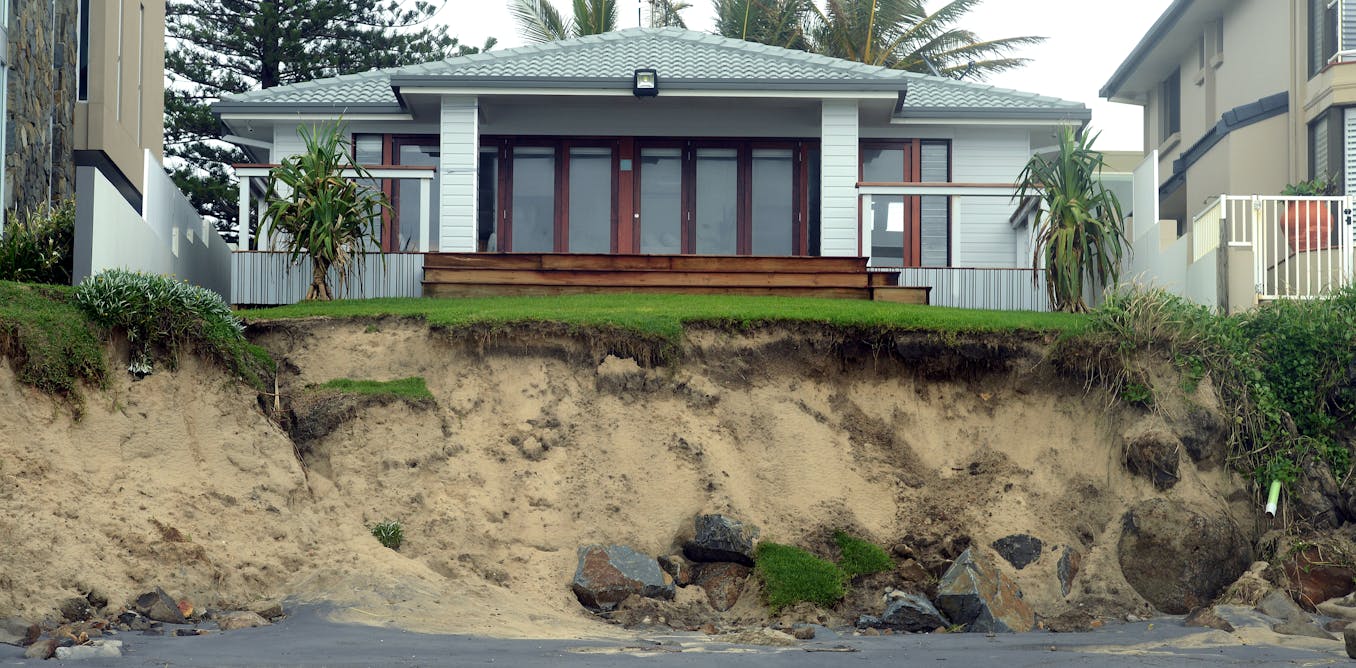How Sci-Fi Informs Our Climate Future — and What to Do Next | Zainab Usman | TED
In the TED talk “How Sci-Fi Informs Our Climate Future — and What to Do Next,” Zainab Usman discusses how science fiction can offer insights into humanity’s fight against climate change. She draws parallels between the dystopian worlds depicted in works of fiction, such as Cixin Liu’s “The Three-Body Problem” trilogy and George Orwell’s “1984,” and the current state of global affairs.
Usman argues that the world is already experiencing a form of fragmentation, with countries forming geoeconomic blocs that may hinder our ability to collectively tackle climate change. She emphasizes the need for global cooperation in order to deploy clean technology solutions at scale and address the rapid warming of the planet.
The speaker also highlights the importance of prioritizing consumer gains and welfare, as well as establishing global standards for sourcing strategic minerals. She warns of the potential consequences of competing for scarce resources and the need to prevent the destruction of fragile ecosystems.
Usman calls for action on three fronts: policymakers need to consider the long-term consequences of protectionist policies, business leaders must weigh the benefits of insular markets, and scholars, intellectuals, and activists must advocate for values that promote human well-being, shared prosperity, ecological balance, and mutual coexistence.
Overall, Usman’s talk offers thought-provoking insights into the intersection of science fiction, climate change, and global cooperation, urging the audience to consider the implications of our current actions on the future of the planet.
Watch the video by TED
We don’t have to look far to see how humanity’s fight against climate change might play out. Science fiction authors from around the world, writing from different traditions, coalesce on one point. A divided world, unable to fight the common threat. In Cixin Liu’s “The Three-Body Problem” trilogy,
The threat of aliens from a dying planet invading to conquer Earth does not bring humanity together. Instead, a potent combination of fear, jingoism and competition for scarce resources among countries fractures the world into competing geoeconomic blocs centered around three powers: the United States, China and Europe.
And none of these blocs succeed in staving off the alien invasion with, as you can imagine, disastrous consequences for the survival of humanity. Sorry for the spoilers about the books. In George Orwell’s “1984,” the world’s three superstates — Oceania, Eurasia and East Asia — fight each other in perpetuity in a disputed area located mostly around parts of Africa and the Middle East, where “the rest” reside. The realm of fiction is years ahead in anticipating important global currents.
The International Monetary Fund’s “World Economic Outlook” describes an ongoing fragmentation of our global economy around four blocs: The United States, China, the European Union and the rest. This geoeconomic fragmentation may seriously hinder our ability to fight climate change by affecting the collective will to fight it. Because no individual, no group
And certainly no nation state is self-sufficient in all of the resources, the finances and the manpower needed to reduce the rapid warming of our planet. We need collective action to invent and deploy at scale the technology solutions needed to reduce greenhouse gases in wealthy, high-emitting countries
And to build systems in poorer, low-emitting countries to help them adapt to changing weather patterns. This is a three-part problem. Let us starts with the technoeconomic spheres of innovation. OK, I have to confess, even that is a mouthful for me. So let’s rephrase this a bit.
Where in the world is innovation around low-carbon technologies happening? To slow down the speed of global warming, we need to deploy clean technology solutions around battery storage, renewable energy generation, etc., at scale in all reaches of the world. But the innovation around these crucial low-carbon technologies
Is happening in only a handful of countries. The world’s largest science and technology clusters, with the highest density of inventors and scientific authors, are concentrated in just three regions: North America, Europe and Asia. There is a danger here that the innovation and diffusion of these crucial low-carbon technologies
Will only happen among an exclusive group of allies, while excluding non-allies, especially the poorer countries. We are already seeing a trend of global public energy research and development budgets concentrated within these technoeconomic spheres of innovation: China, Europe and the United States. A second part of the problem
Is that we need to prioritize consumer gains and welfare. The commercialization of climate mitigation and adaptation technologies is essential for their global equitable deployment at scale. The mass production of clean energy hardware, electric vehicles, sustainable building materials and so on will encourage their widespread use.
Access to large export markets will result in higher quality products and the creation of green jobs at home. Competition among producer firms will help push down prices for consumers and help raise living standards across the board, including in poorer countries.
But if strict barriers to entry are placed on firms from rival geoeconomic blocs, there will be a cost to this lack of competition that is borne by ordinary people. Inefficiencies in the mass production of green technologies by firms with monopoly power in small but captive markets
Will neither reduce greenhouse gases, nor improve people’s quality of life. Imagine having to choose between maybe two or even one brand of highly overpriced electric vehicles or solar panels, when restrictions are placed on the imports of dozens of more affordable options from companies from around the world.
This is the case currently with cell phones in some countries, where consumers are restricted to just two highly overpriced brands, or maybe even one. A third issue is that we need global standards to govern the sourcing of strategic materials. Strategic minerals, such as cobalt, copper, nickel and lithium
Are essential components for the manufacturing of solar panels that we all love, electric vehicles, wind turbines and other such clean energy, clean mobility hardware. These resources are nonrenewable. They are in finite supply and they are in high demand. By 2040, for instance, the demand for lithium is projected to grow 40-fold.
For graphite, 25-fold. And for copper 21-fold. These minerals are often found in poorer countries, such as the Democratic Republic of Congo in Africa, Indonesia, Myanmar and the Philippines in Asia, and in fragile ecosystems such as our ocean floors. In a world of fiercely competing geoeconomic blocs,
How will the race to access these scarce strategic minerals play out? Think about this for a second. The race to access strategic minerals from our ocean floors, destroying precious animal and plant species. Or a new space race to strip the moon of strategic minerals.
I wish all of this was far-fetched, but it really is not. In fact, the history of the Democratic Republic of Congo is a cautionary tale of what a zero-sum race without guardrails to access precious human and natural resources could do. It was a competition among European empires
That drove the transatlantic slave trade between the 16th and the 19th centuries that depopulated vast swaths of the Congo. The Shinkolobwe mine in the Congo was a source of two thirds of the uranium used in the atomic bomb that the United States dropped on Hiroshima in 1945, during World War II.
Today, the Congo is a source of cobalt that makes its way to refineries in China for the manufacturing of batteries. We need global standards to prevent the destruction of our fragile ecosystem, such as our ocean floors, the moon and the Democratic Republic of Congo. Now an alternative scenario is actually possible.
We can reject the dystopian future painted by Liu and Orwell if we consciously prioritize collective action on the key issues that matter. To do that, we need action on three fronts. Policymakers are the ones implementing radical protectionist policies to meet short-term political imperatives. They need to think carefully about the long-term consequences
For their people, their economies and their societies that will persist long after their political tenures. Business leaders must consider whether atomized and insular markets are their preferred future. And finally, for us scholars, intellectuals and activists, we must identify and defend the values that matter most to us.
We must advance continued improvements in human well-being, shared prosperity for everyone around the world, ecological balance and mutual coexistence. Thank you.
About TED
The TED Talks channel features the best talks and performances from the TED Conference, where the world’s leading thinkers and doers give the talk of their lives in 18 minutes (or less). Look for talks on Technology, Entertainment and Design — plus science, business, global issues, the arts and more. You’re welcome to link to or embed these videos, forward them to others and share these ideas with people you know.
Video “How Sci-Fi Informs Our Climate Future — and What to Do Next | Zainab Usman | TED” was uploaded on 02/16/2024 to Youtube Channel TED



































